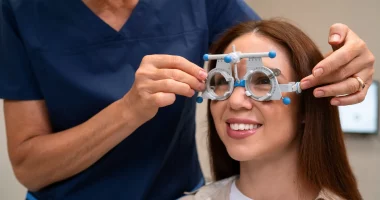Axillary hyperhidrosis is a condition characterized by excessive sweating in the underarm area, far beyond what is necessary for regulating body temperature. This condition can significantly impact an individual’s quality of life, causing discomfort, social anxiety, and embarrassment due to visible sweat stains and body odor. The exact cause of axillary hyperhidrosis is not entirely understood, but it is believed to involve overactive sweat glands influenced by the nervous system.
Various treatment options are available, ranging from topical antiperspirants and medications to more advanced interventions like botulinum toxin injections, microwave therapy, and surgical procedures. Effective management of this condition often requires a personalized approach to reduce symptoms and improve the affected individual’s daily life and confidence.
Symptoms
Axillary hyperhidrosis primarily manifests as excessive sweating in the underarm area that is disproportionate to the body’s needs for cooling. This excessive sweating can occur regardless of physical activity or environmental temperature, often making everyday activities challenging. Individuals with this condition may notice their clothing frequently becoming soaked, even when they are not exerting themselves or feeling hot. This persistent sweating can lead to visible sweat stains, which can be a source of significant embarrassment and social discomfort, impacting one’s self-esteem and confidence in social and professional settings.
In addition to the physical symptoms, axillary hyperhidrosis can cause skin issues such as irritation, chafing, and fungal or bacterial infections due to the constant moisture. The emotional and psychological impact is also considerable, with many individuals experiencing heightened levels of stress, anxiety, and avoidance behavior due to their condition. Simple actions like raising their arms or engaging in close-contact situations can become sources of anxiety. The social stigma and discomfort associated with visible sweating can lead to withdrawal from social activities and negatively affect overall quality of life.
Causes
The causes of axillary hyperhidrosis are not entirely understood, but several factors are believed to contribute to its development. Primary axillary hyperhidrosis, the most common form, is thought to be related to genetic and hereditary factors. It often runs in families, suggesting a genetic predisposition. In this form, the eccrine sweat glands, which are abundant in the underarm area, become overactive due to a malfunction in the sympathetic nervous system. This system, which controls the body’s “fight or flight” responses, may send excessive signals to the sweat glands, causing them to produce more sweat than necessary.
Secondary axillary hyperhidrosis, on the other hand, is usually linked to underlying medical conditions or the use of certain medications. Conditions such as hyperthyroidism, diabetes, obesity, and menopause can lead to excessive sweating as a symptom. Additionally, certain medications, particularly those affecting the hormonal balance or the nervous system, can also trigger or exacerbate excessive underarm sweating. Unlike primary hyperhidrosis, secondary hyperhidrosis tends to have a more sudden onset and is often associated with other systemic symptoms, necessitating a thorough medical evaluation to identify and address the underlying cause.
Risk factors
The risk factors for axillary hyperhidrosis include:
- Genetic Predisposition: A family history of hyperhidrosis increases the likelihood of developing the condition.
- Age: Symptoms often begin in adolescence or early adulthood.
- Medical Conditions: Underlying conditions such as hyperthyroidism, diabetes, obesity, and menopause can contribute to excessive sweating.
- Medications: Certain drugs, especially those that affect the hormonal balance or the nervous system, can trigger excessive sweating.
- Anxiety and Stress: High levels of anxiety and stress can exacerbate sweating, creating a cycle where sweat leads to more anxiety, further increasing sweating.
- Gender: There is some evidence suggesting that axillary hyperhidrosis may be more common in women than in men.
Diagnosis
Diagnosing axillary hyperhidrosis involves a combination of clinical evaluation and diagnostic tests to determine the extent of the condition and rule out underlying causes. The process typically starts with a detailed medical history and physical examination to assess the severity of the sweating and its impact on the patient’s life. The healthcare provider may inquire about the onset, frequency, and triggers of the excessive sweating, as well as any family history of similar issues. This initial assessment helps in differentiating primary hyperhidrosis, which often begins in childhood or adolescence, from secondary hyperhidrosis, which may be associated with other medical conditions or medication use.
Diagnosis of Axillary Hyperhidrosis:
- Medical History and Physical Examination: Detailed patient history and physical assessment to evaluate sweating patterns and impact.
- Starch-Iodine Test: Application of an iodine solution followed by starch powder to the underarms; areas of excessive sweating turn dark blue.
- Quantitative Sudomotor Axon Reflex Test (QSART): Measures sweat production in response to stimuli to assess autonomic nervous system function.
- Gravimetric Measurement: Weighing of absorbent pads before and after they are placed in the underarms to quantify sweat production.
- Minor’s Test: Similar to the starch-iodine test, but specifically used to map sweat production for targeted treatment.
- Thermoregulatory Sweat Test: Evaluates overall sweat response of the body under controlled temperature and humidity conditions.
- Blood Tests: To rule out underlying conditions such as diabetes, hyperthyroidism, or infections that might cause secondary hyperhidrosis.
- Psychological Assessment: Evaluation of the emotional and psychological impact of hyperhidrosis, which may influence treatment options.
Treatment
Treating axillary hyperhidrosis involves a range of approaches, from lifestyle modifications and topical treatments to more advanced medical interventions. Initially, antiperspirants including aluminum chloride can be effective in reducing sweat production by blocking the sweat ducts. For more severe cases, prescription-strength antiperspirants may be recommended. In addition to topical treatments, lifestyle changes such as wearing breathable clothing, maintaining good hygiene, and avoiding triggers like spicy foods or stress can help manage symptoms. If these measures are insufficient, oral medications such as anticholinergics, which reduce overall sweating, might be prescribed, though they may have complications like blurred vision and dry mouth.
For patients who do not respond to conservative treatments, procedural options are available. Botulinum toxin injections can provide significant relief by temporarily blocking the nerves that affect sweat glands, with effects lasting several months. Another effective treatment is microwave therapy, such as miraDry, which uses electromagnetic energy to destroy sweat glands. In severe cases, surgical options like ETS, which involves cutting the nerves accountable for extreme sweating, or excision of sweat glands, may be considered. These procedures carry more risks and potential side effects but can offer long-term solutions for individuals with debilitating hyperhidrosis. Combining multiple treatments can often yield the best results, tailored to the patient’s specific needs and the severity of the condition.
Prevention
Preventing axillary hyperhidrosis entirely may not be feasible due to its often genetic or physiological origins. However, certain lifestyle modifications and practices can help manage symptoms and reduce the impact of excessive underarm sweating. Maintaining a healthy weight through regular exercise and a balanced diet can sometimes alleviate symptoms, as obesity can exacerbate sweating. Wearing loose-fitting, breathable clothing made of natural fabrics like cotton can help minimize sweating and provide better air circulation.
Avoiding triggers such as spicy foods, caffeine, and alcohol, which can stimulate sweat production, may also be beneficial. Additionally, practicing stress-reduction techniques such as meditation, yoga, or deep breathing exercises can help manage emotional triggers that contribute to sweating. Overall, adopting a proactive approach to managing stress, maintaining a healthy lifestyle, and avoiding known triggers can play a significant role in mitigating the effects of axillary hyperhidrosis.
Management
Managing axillary hyperhidrosis involves a multi-faceted approach tailored to the individual’s needs and the severity of their condition. Initially, conservative measures such as using over-the-counter or prescription-strength antiperspirants including aluminum chloride can help reduce sweat production. Lifestyle modifications such as wearing breathable clothing, practicing good hygiene, and avoiding known triggers like spicy foods or stressful situations can also be effective. For more severe cases, medical interventions like botulinum toxin injections, microwave therapy, or oral medications may be recommended to block nerve signals or reduce overall sweating.
In some instances, surgical options like endoscopic thoracic sympathectomy (ETS) or excision of sweat glands may be considered for long-term relief. Combining different treatments and ongoing management strategies can provide individuals with axillary hyperhidrosis with significant improvement in symptoms and quality of life. Regular follow-up with healthcare providers is essential to adjust treatment plans as needed and ensure optimal management of the condition.
Summary
Axillary hyperhidrosis, characterized by excessive underarm sweating, poses challenges to individuals due to its genetic predisposition and potential association with medical conditions or medications. Diagnosis involves a comprehensive assessment, including medical history, physical examination, and diagnostic tests to differentiate primary and secondary causes. Treatment options range from lifestyle modifications and topical antiperspirants to advanced interventions like botulinum toxin injections or surgical procedures, tailored to the severity and impact of the condition.
Prevention strategies focus on maintaining a healthy lifestyle, managing stress, and avoiding triggers known to exacerbate sweating. Overall management entails a multidisciplinary approach, combining various treatments and ongoing support to alleviate symptoms and improve quality of life for individuals affected by axillary hyperhidrosis. Regular follow-up with healthcare providers ensures effective management and adjustment of treatment plans as needed.









